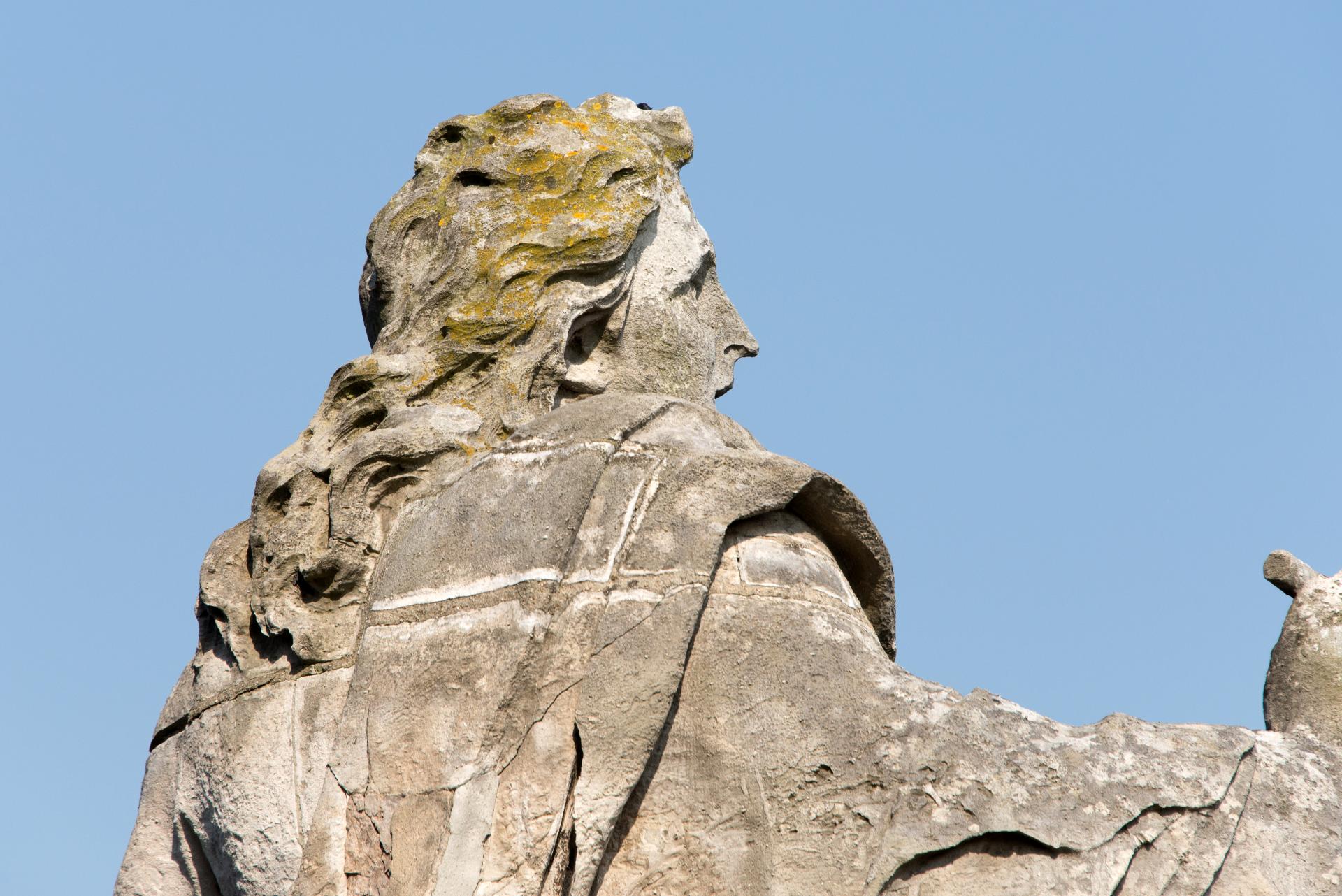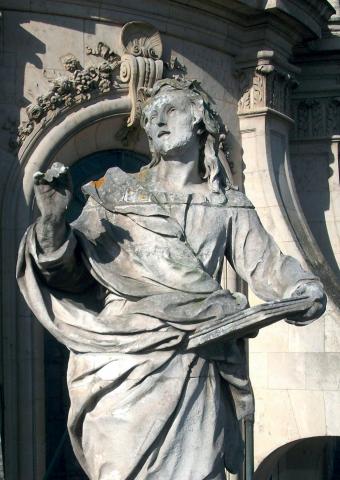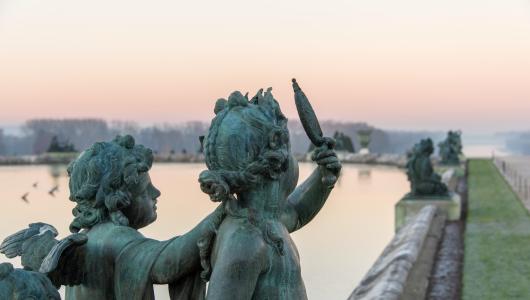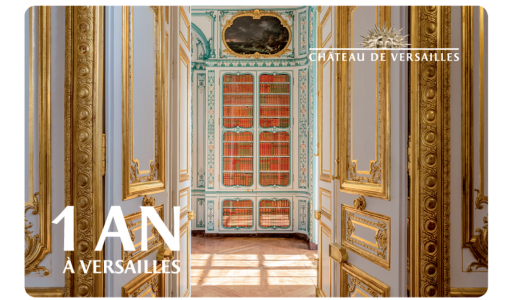Saint John
Portrayed as a young man with long hair and a short beard, Saint John the apostle and evangelist is dressed in a long-sleeved tunic with a cloak over the top. He is gazing towards heaven and is about to write his gospel on the tablets in his left hand using the stylus held in his right.
Saint John features in many of the scenes from the New Testament, including the Transfiguration, the Last Supper and the Crucifixion. After the Ascension, he moved to Ephesus where he wrote his Gospel and lived to an old age. According to legend, he was taken up into heaven in an assumption similar to that of the Virgin Mary. He is known as the patron saint of booksellers.
Saint John © EPV/Thomas Garnier
the sculptor Corneille van Clève
As a descendent of a family of goldsmiths, Corneille Van Clève specialised in bronze work. The supple, elegant nature of his work caused him to become one of the main artists behind the introduction of the Rococo style in France. After a ten-year stay in Rome and Venice, he was admitted to the Academy upon returning to France. He sculpted for the king at Versailles, the estate of Marly, the Hôtel des Invalides and in the choir of Notre-Dame. His work can be admired in the gardens of Versailles, with the statue of Sleeping Ariadne and the Children of the Water Parterre, as well as inside the Royal Chapel with the high altar, which was culminating point of his art, with the bas-relief of Dead Christ, the Adoring Angels, Radiant Glory and the Adolescent Angel with Outspread Wings, all in gilded bronze.






